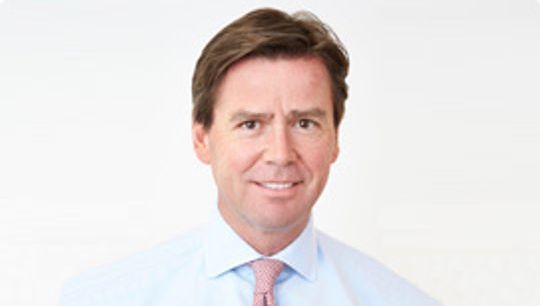AIMA/KPMG: The Evolution of an Industry
By AIMA & KPMG
Published: 01 May 2012
The following is an online summary of this particular AIMA paper
About this Research
KPMG and the Alternative Investment Management Association (AIMA) have prepared this report based on surveys and structured interviews conducted between October 2011 and February 2012 with hedge fund managers from around the globe. Our research has benefitted from the participation of 150 respondents representing approximately US$550 billion of assets under management. The respondents to the survey include hedge funds of all sizes, with 24 percent of respondents managing less than US$100 million, 40 percent managing between US$100 million and US$999 million, 24 percent managing between US$1 billion and US$9.9 billion, and 10 percent managing more than US$10 billion in assets under administration.
The objective of this study was to obtain insights and opinions from hedge fund managers with respect to a wide range of timely, industryrelated topics, including the continuing institutionalization of the business, the changing face of hedge fund operations, the growing emphasis on transparency and due diligence, the ongoing regulatory challenges and the future of the industry. We also set out to provide additional perspective to the findings we reported in ‘The value of the hedge fund industry to investors, markets and the broader economy’, another joint initiative between KPMG and AIMA, which was published on April 24, 2012.
Our foremost thanks go to the individuals who participated in this research. We would also like to offer our special thanks to the hedge fund executives who participated in our structured interviews. The insights, opinions and expertise of all the survey participants were invaluable in helping to paint as complete and accurate a portrait as possible of the global hedge fund industry of today, as well as the opportunities and challenges that are facing it in the years to come.
| Robert Mirsky Partner Investment Management KPMG in the UK |
Anthony Cowell |
Andrew Baker CEO AIMA |
Executive Summary
In the years before the global financial crisis, the global hedge fund industry experienced dynamic growth, reaching US$2 trillion in assets under management (AUM) in 2008. That period of growth was marked by increased institutional investment as pension funds and university endowments were attracted by uncorrelated returns and low volatility. However, high net worth individuals, traditionally the main investors in hedge funds, were still the leading investors in the industry.
The global financial crisis resulted in significant redemptions from hedge funds. Meanwhile, since the crisis, new capital coming into the industry has been largely from institutional investors, who had stuck by the industry during the crisis. This has resulted in significant changes. Pre-crisis, the majority source of capital came from non-institutional investors such as high net worth individuals and family offices, post-crisis it is now institutional investors who are the leading allocators to hedge funds. Because institutional investors are extremely demanding in terms of due diligence, they require robust operational infrastructure in the managers they allocate to, so managers have responded by strengthening their own infrastructure. And because these institutional investors seek increased transparency, managers have increased their capacity to provide that too.
All this has been happening in the context of a major wave of new post-crisis regulation impacting the industry. That, too, has had an impact on operational structures, as managers have had to increase their own in-house compliance capacity to respond to the new regulatory requirements.
The industry is therefore becoming more ‘institutionalized’ not only in terms of assets under management but also in terms of its own operational infrastructure. But this has created issues for emerging managers. The increased costs to implement more robust operational infrastructure in order to attract institutional capital is becoming a real challenge to their growth.
These changes, as well as the hedge fund industry’s responses, attitudes and opinions toward them, were the catalyst for this joint research initiative between AIMA and KPMG. This paper features analysis of a recent survey of global hedge fund managers and considers the impacts of a changing investor base on the industry, including the manner in which the institutionalization of the hedge fund industry is resulting in an increased focus on operational infrastructure by managers and how global regulation is impacting day-to-day operations.
The following are some of the many compelling findings from the survey:
- Institutional investors now represent a clear majority of all assets under management by the global hedge fund industry, with 57 percent of the industry’s AUM residing in this category. The proportion of hedge fund industry assets originating from institutional investors has grown significantly since the financial crisis.
- Investor size and manager size are strongly correlated in terms of allocations made by investors to managers. Large institutional investors are more likely to allocate to large hedge fund managers, while smaller family offices are more likely to allocate to smaller hedge fund managers.
- For fund of funds, the opposite is true, as allocations are twice as likely to go to managers with less than US$500 million in assets than those with assets in excess of US$1 billion. Fund of funds are increasingly focusing on emerging managers.
- New money injected into the industry since 2008 has come primarily from North America, Asia-Pacific and the Middle East, while allocations from the European Union have held steady and those from Switzerland have declined.
- The amount of time managers say they have spent handling due diligence inquiries from investors has doubled since 2008.
- Seven of every 10 respondents reported a decrease in fund of funds allocations since 2008. This decrease has been largely offset by the new influx of capital from institutional investors.
- Managers have become much more institutionalized in terms of their operational infrastructure as a result of increased investor demands. In fact, 82 percent of respondents reported an increase in demand for transparency from investors, while 88 percent said investors are demanding greater due diligence.
- Managers have significantly increased headcount to respond to both increased regulatory compliance requirements, and increased investor demand for transparency and due diligence. Respondents almost unanimously (98 percent) reported an increase of at least one employee in the area of regulatory compliance, while 26 percent said they had hired two or more people in this area.
- Respondents, both large and small, are confident there will be strong inflows into the industry over the next several years, but expect there will be fewer managers in operation at both ends of the scale.
- Boutique players continue to demonstrate an ability to evolve and, indeed, thrive in this changing business landscape. One example is the emergence of ‘co-opetition’, where managers with different strategies, who would otherwise be competitors, come together to form mutually beneficial working relationships.
These will prove to be pivotal days in the evolution of the global hedge fund industry. The strategies, decisions and reactions of today will shape the form and function of the industry for years to come. What better time, then, to examine the inner workings and decision-making processes taking place within the boardrooms of the world’s hedge funds?





